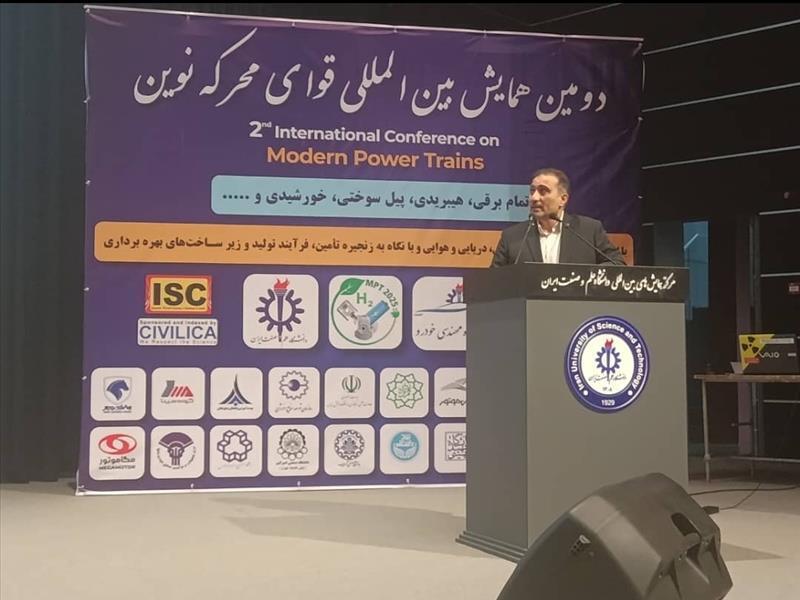Kerman Motor Unveils Clean Powertrain Development Plans
 Khodrocar - The Second International Conference on Advanced Powertrains was held today, October 13, at Iran University of Science and Technology, where Abolfazl Khalkhali, Vice President of Product Development at Kerman Motor, presented the company’s roadmap for developing next-generation powertrain technologies and transitioning toward low-emission, hybrid, and fully electric vehicles.
Khodrocar - The Second International Conference on Advanced Powertrains was held today, October 13, at Iran University of Science and Technology, where Abolfazl Khalkhali, Vice President of Product Development at Kerman Motor, presented the company’s roadmap for developing next-generation powertrain technologies and transitioning toward low-emission, hybrid, and fully electric vehicles.
Highlighting the country’s alarming air pollution levels, Khalkhali stated that Iran’s per capita consumption of fossil fuels is nearly twice the global average, with the current average CO₂ emissions of domestic vehicles standing at 170 grams per kilometer—a stark contrast to the European Union’s 2030 target of 59 grams per kilometer.
“Our goal at Kerman Motor is to reduce the average CO₂ emissions of our products to around *105 grams per kilometer by 2028 (1407 in the Iranian calendar),” Khalkhali said. “To achieve this, we are focusing on developing electric and hybrid vehicles while improving the efficiency of gasoline engines.”
He emphasized that Kerman Motor currently accounts for 88% of Iran’s electric transportation fleet, underscoring the company’s pioneering role in electrifying both public and private mobility.
Khalkhali also noted that 20 charging stations and 37 chargers have been installed nationwide through private investment by Kerman Motor, despite minimal government support and the absence of a comprehensive policy framework from the Ministry of Industry, Mine, and Trade.
Discussing the importance of research and development, he said:
“Kerman Motor’s R&D division was established in 2021 to complete the company’s value chain. The greatest added value in the automotive industry is created through R&D, and we are now on the path to developing indigenous vehicle platforms to create long-term value.”
According to Khalkhali, under Kerman Motor’s “Ahd 1407” strategic plan, the company’s product lineup by 2028 will consist of 60% gasoline, 30% hybrid, and 10% fully electric vehicles. The new gasoline engine, with 70% localization, is expected to reduce fuel consumption by 20%, while advanced hybrid technologies aim for a 35% reduction.
He added that, given Iran’s current energy imbalance and limited electricity distribution capacity, hybrid powertrains represent a practical path forward. “That’s why Kerman Motor has taken significant steps in hybrid technology development,” he said.
Khalkhali also revealed details of the company’s new vehicle platforms. The PS1 platform, originally co-developed with Italian partners, has now been fully localized, with hybrid and electric variants in advanced stages of development. Two additional platforms—KP2 and KP1—are also underway and will form the basis of Kerman Motor’s future product range.
Among upcoming products, the Eagle EV (PS11) will be Kerman Motor’s first fully electric model. It features a T-shaped battery pack integrated into the base platform and is currently undergoing testing and calibration.
Meanwhile, the Shadow model has been entirely designed and developed in-house, reaching the prototype stage in under two years. The KMC Shadow Hybrid and Eagle Hybrid are both scheduled for launch next year. Future product development will also include models built on the KP21 and KP22 platforms, offering gasoline, hybrid, and electric powertrain options.
In closing, Khalkhali reaffirmed Kerman Motor’s commitment to innovation:
“We are determined to advance our product development and technology roadmap, moving decisively toward lower emissions and higher efficiency. The future of Iran’s automotive industry depends on investing in knowledge, research, and innovation.”


